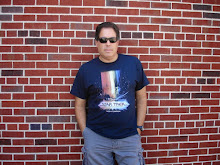Monday, September 3, 2018
SULLY
(September 2016, U.S.)
At the start of the year 2009, New York City and the rest of the world had plenty on its mind; a global financial crisis, the first recently elected African-American President of the United States, and the criminally fraudulent activities of Bernie Madoff, just to name some. On January 15, 2009, the best news the city of New York could have received was good news, particularly news involving a plane. On that day, I was at home on Long Island looking for a new job, and by the time I'd turned on the TV, the breaking story of the crash of U.S. Airways Flight 1549 into the Hudson River after striking a flock of birds was already a couple of hours old. This was the image that dominated the screen...
...and while it must have been a scene of fear and terror for those on board that ill-fated flight, for those of us watching the TV and still recalling the events of 9/11 just over seven years earlier, the sight of that plane in the water with all of its one hundred and fifty-five passengers alive and awaiting rescue was just the miraculous sight of relief we all needed to see. Then there was, of course, the ongoing coverage of the flight's heroes, Captain Chesley "Sully" Sullenberger (played by Tom Hanks) and First Officer Jeff Skiles (played by Aaron Eckhart). We needed heroes at that time, and we got them. Makes you almost wonder why it took seven years for the film that would tell their story of the accident that day that would come to be known as the "Miracle on the Hudson".
Director Clint Eastwood's film SULLY is non-linear in its timeline approach to what not only took place on January 15, 2009, but also the aftermath of the media coverage hailing Sully as a hero, the aftermath of Sully himself in which he experiences haunting dreams of the crash, and the inevitable investigation by the National Transportation Safety Board claiming that a series of computerized simulations suggest that Sully could have landed the plane safely at nearby LaGuardia or Teterboro Airports instead of choosing to ditch the plane in the Hudson River. To the film's viewer, such allegations are absurd and insulting, but we also have to presume it's what actually took place behind closed doors even as we had no doubt of who the hero of the day was, and why we needed such a hero in our lives.
As the film switches back and forth between the events of the accident from both the perspective of the pilots and the passengers, we experience the on-board tension of watching a plane fly unreasonably low over New York City because we haven't forgotten what happened on September 11, 2001. We also feel the tension of Sully having to experience the stress of those who believe he may have been in error when making that fateful decision that saved the lives of all on board. He arranges to have the simulations rerun with live pilots, and the results are relayed to a public hearing. These simulations result in successful landings, one at each nearby airport. Still undeterred by his decisions and actions, Sully argues that the simulations are unrealistic because the test pilots had the convenience of knowing in advance of the bird situation they would face and of the suggested emergency action that would follow. Thus, they were able to practice the scenario several times until they got it right. They weren't there the day it happened and cannot possibly understand the human factor involved. In the end, allowing for a thirty-five second pause before the plane's diversion, new computer simulations are performed which prove Sully to be right, concluding that he acted correctly and saved the lives of everyone aboard.
Like FORREST GUMP (1994) and CASTAWAY (2000), Tom Hanks surely owns this movie, delivering a strong and stirring, yet emotionally quiet and humble performance to pay the proper tribute to a true American hero. Eastwood, who has always been a hit-and-miss director with me, offers an engaging drama that is both rich and tense in its delivery of not only a terrifying plane crash, but also the fears and anxieties that plague those who survive it. In other words, when you're not freaking out waiting for the plane to hit the Hudson (more than once), you're also feeling a low-key sense of calmness in the film's beauty of human beings at their best when they're forced to come together for each other. That's what New York City really needed on January 15, 2009, and it looks like they got it.
Favorite line or dialogue:
Elizabeth Davis (at the NTSB investigation proceedings): "First Officer Skiles, is there anything you'd like to add? Anything you would have done differently if you had to do it again?"
Jeff Skiles: "Yes. I would've done it in July."
Subscribe to:
Post Comments (Atom)




No comments:
Post a Comment